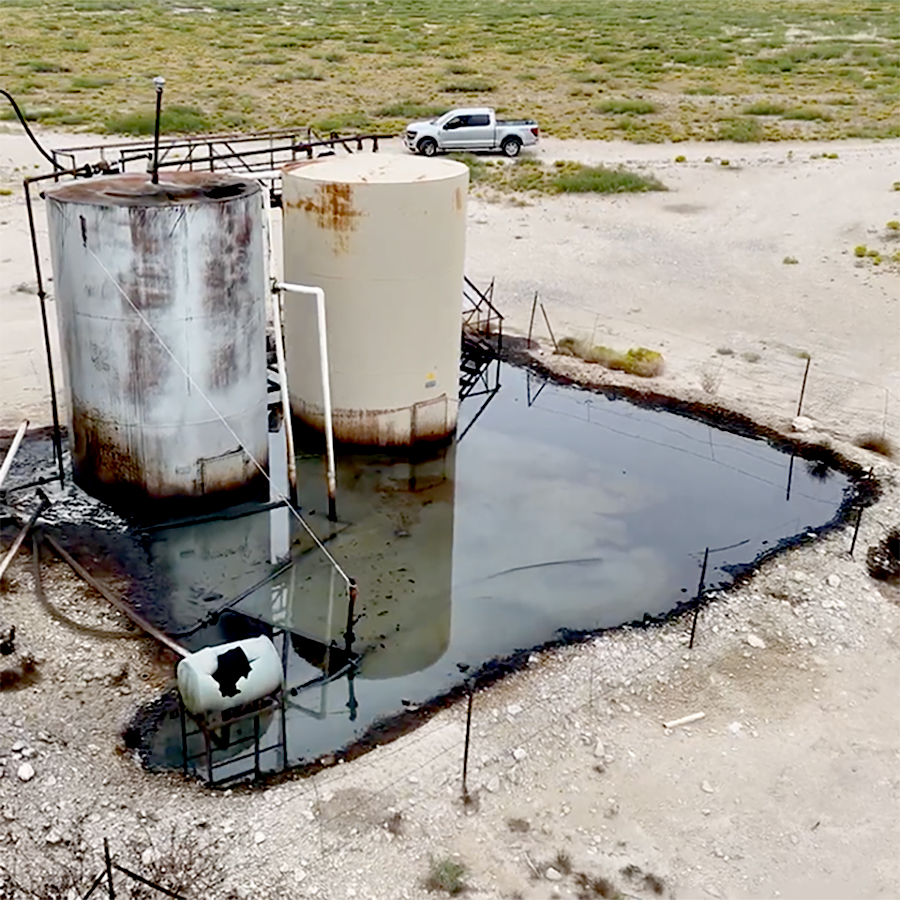In September, NM-IPL conducted a field tour of oil and gas sites in the Permian Basin, near Carlsbad and Artesia, New Mexico. The purpose of this visit was to document methane leaks and other environmental hazards impacting nearby communities and ecosystems. Using a FLIR (Forward Looking Infrared) camera, which can detect otherwise invisible methane emissions, our group observed multiple leaks and safety violations in the span of a single day.
What we found was deeply troubling: ongoing and unaddressed pollution, dangerous conditions near homes and schools, and clear evidence that oil and gas operators are failing to manage their infrastructure responsibly. Methane is a potent contributor to greenhouse gas and major contributor to global warming. The lack of care with preventing methane leaks is a major cause for concern.
Site Observations
Stop 1 – Residential Area, Carlsbad
Our first stop was at a well site surrounded by homes. Using the FLIR camera, we detected a methane leak from one of the storage tanks, with the gas plume drifting directly over nearby residences. This poses serious health risks to local families and underscores the lack of adequate safety buffers between drilling operations and human communities.
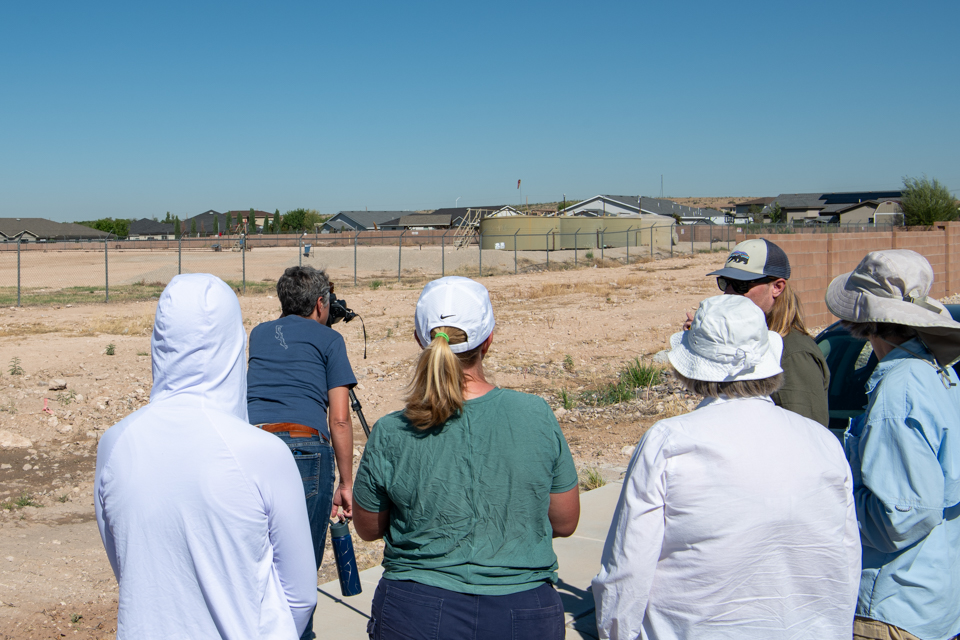
Stop 2 – School Vicinity, Carlsbad
The second site was located next to a elementary school. Upon arrival, our team found the access gate left open and unlocked, a violation of basic safety and security regulations. The proximity of an unsecured, active oil site to a school is alarming and unacceptable.
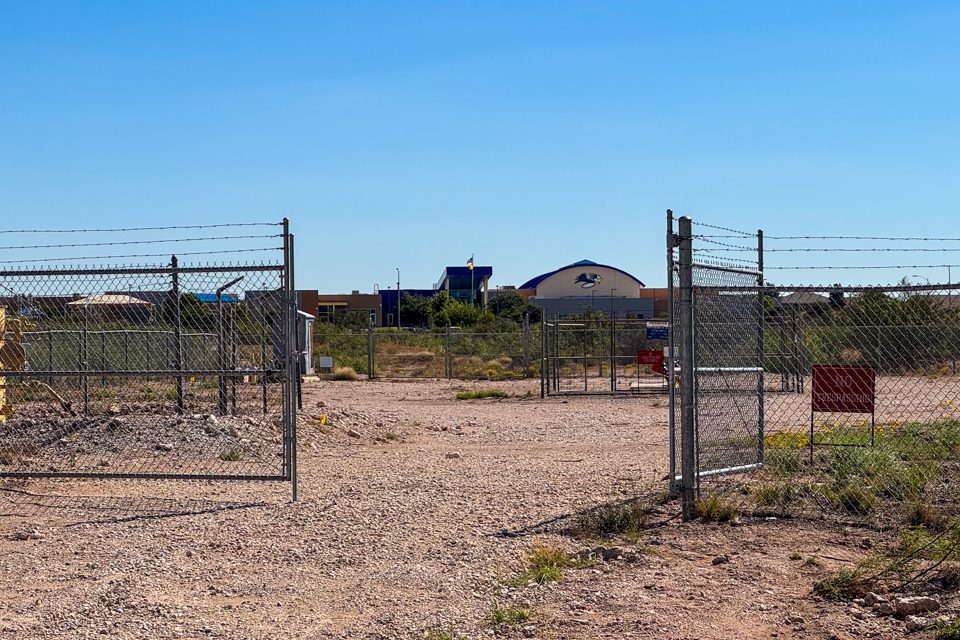
Between Stops 2 and 3 – Widespread Illegal Flaring
As we drove deeper into the Loco Hills oil field, we observed multiple instances of illegal flaring—the burning of excess gas, which often releases large amounts of methane and other pollutants directly into the atmosphere. Flaring wastes valuable natural gas and contributes significantly to climate pollution.
Stop 3 – Abandoned Well Sites
Our third stop was at two long-abandoned well site. The well was uncapped, with visible oil leaks and rusted storage tanks still containing significant quantities of crude oil. The tanks were in poor condition and at high risk of failure, posing immediate contamination threats to the surrounding soil and water.
A pile of trash had been dumped at the site, suggesting complete abandonment and neglect by the operator.
While surveying the area, our group suddenly heard loud venting of gas, forcing us to evacuate for safety. This site is a known chronic methane leaker, yet no remedial action has been taken.
Additionally, we detected a strong odor of crude oil and discovered an active surface leak from oil hoses spilling onto the ground—further evidence of environmental contamination and regulatory failure.
Drone footage captured nearby revealed another abandoned well site surrounded by a large pool of oil and polluted water, clearly visible on the ground around the tanks and well equipment.

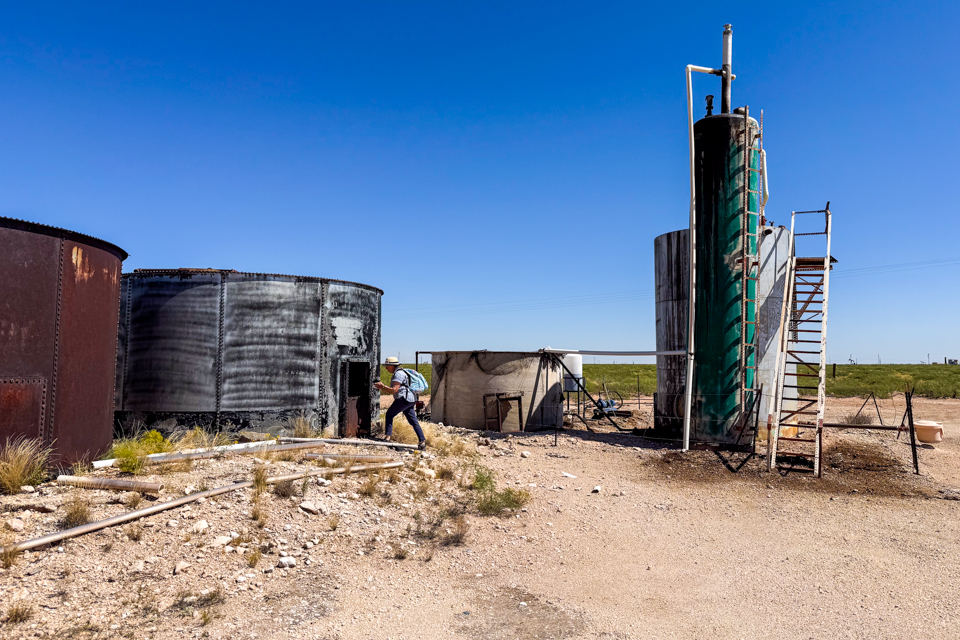
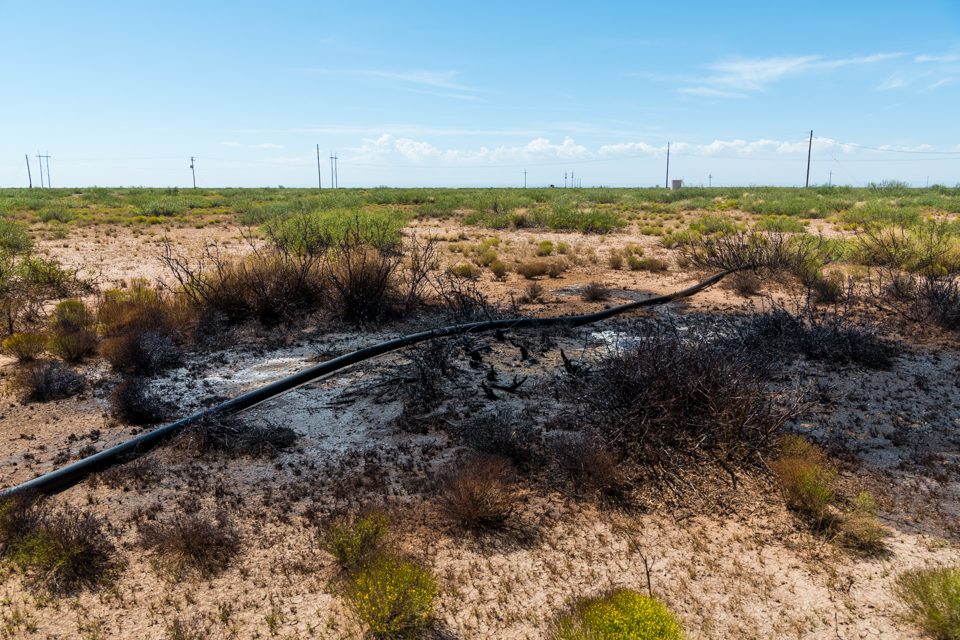
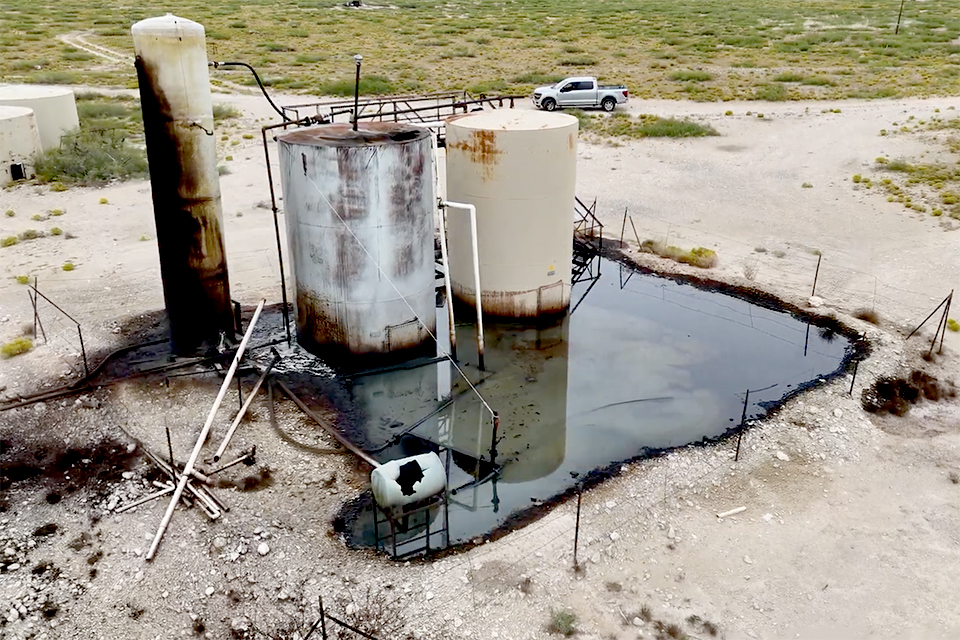
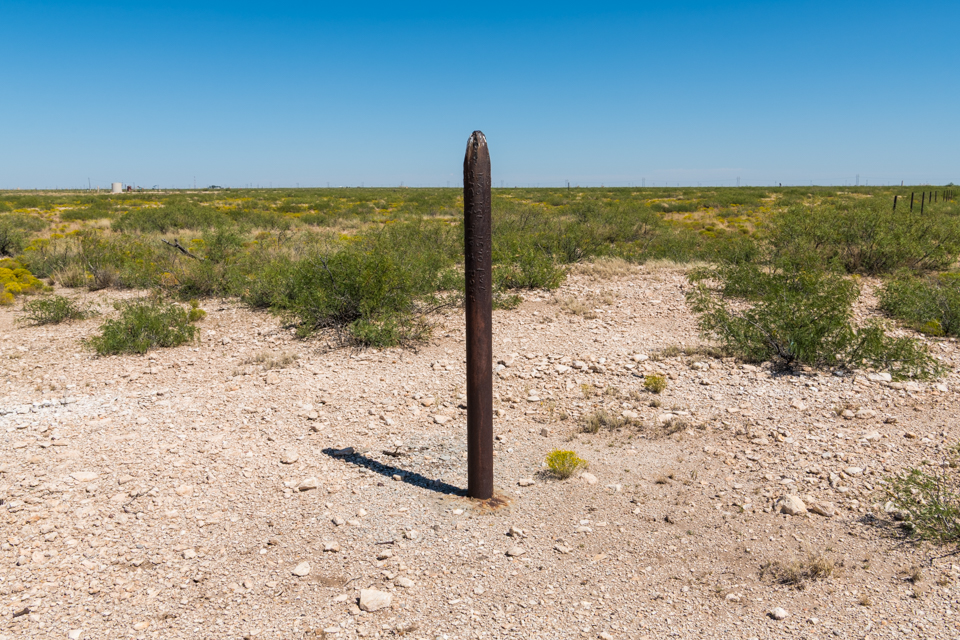
Stop 4 – Active Well Site
At our fourth stop, we visited an active well site in the heart of the Loco Hills area. Like many areas in the Permian Basin, this area is densely populated with well sites that have completely transformed the landscape. The scale and density of oil & gas development is overwhelming, but is typical of much of the Permian Basin in New Mexico and Texas—an area nearly the size of the UK! A significant percentage of these wells are abandoned, with no care taken to cap them and remove the old equipment.
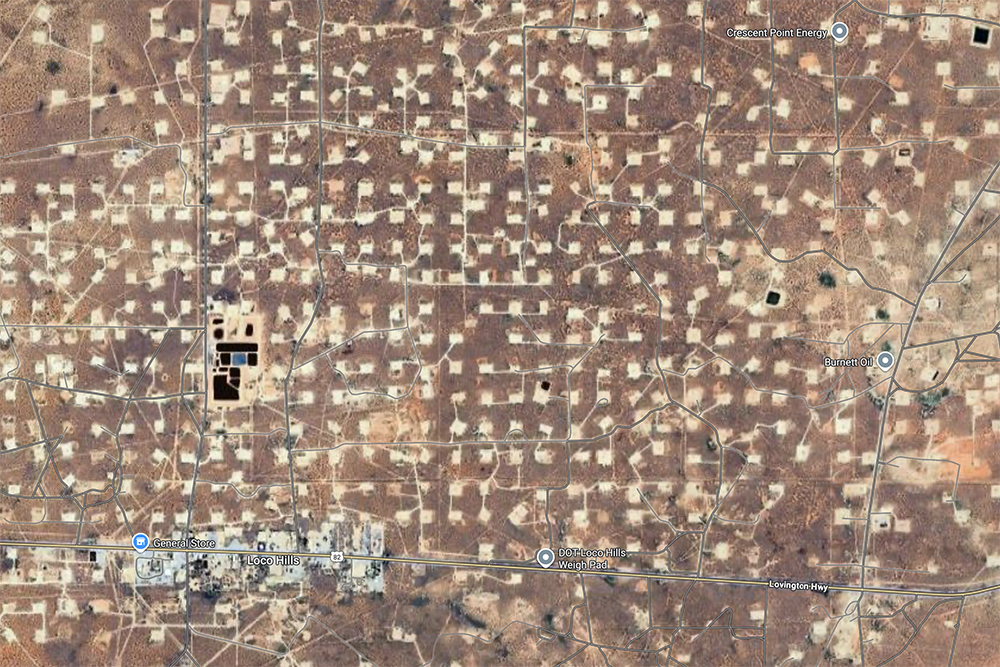
Stop 5 – HF Sinclair Refinery
Our final stop was at the HF Sinclair Refinery in Artesia. Using the FLIR camera, we detected stacks emitting methane gas, in apparent violation of emission standards. These findings indicate that even large, established operators are contributing to ongoing air pollution in the region.

Key Findings
- Methane leaks were observed at multiple sites, including in residential areas.
- Abandoned and neglected wells continue to emit methane and leak oil, with no visible containment or remediation efforts.
- Illegal flaring remains widespread and largely unmonitored.
- Regulatory oversight and enforcement appear severely inadequate, allowing operators to ignore cleanup and safety obligations.
- Not only are methane leaks a major contributor to global warming, but the leaks mean the gas is not being captured for production purposes, which is an economic waste.
Conclusions & Recommendations
The results of this tour demonstrate that the oil and gas industry cannot be trusted to police itself. Methane and oil leaks pose an immediate threat to public health, air quality, groundwater, and the climate.
To protect New Mexicans and our sacred lands and waters, NM-IPL calls for:
- Bonding reform — Oil and gas companies must be held financially responsible for cleanup and well closure.
- Stronger monitoring and enforcement — Regular, independent inspections using methane detection technology must be mandatory.
- Public transparency — Communities deserve access to real-time data on emissions and violations.
- Transition support — State and federal leaders must accelerate investment in renewable energy and worker transition programs to reduce dependence on fossil fuels.
The Permian Basin is one of the largest oil-producing regions in the world—but it is also one of the largest sources of methane pollution. What we witnessed makes clear that urgent action is needed to protect both people and the planet.
👉 Bonding reform is particularly urgent at this time. The state is currently modernizing bonding oil & gas industry bonding rules. This is our opportunity to get the oil and gas industry to pay to clean up their abandoned wells. Join our campaign for bonding reform now!↗


